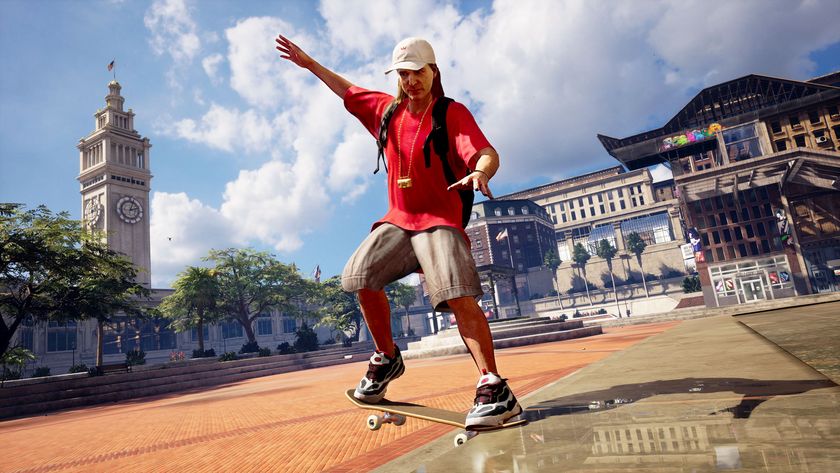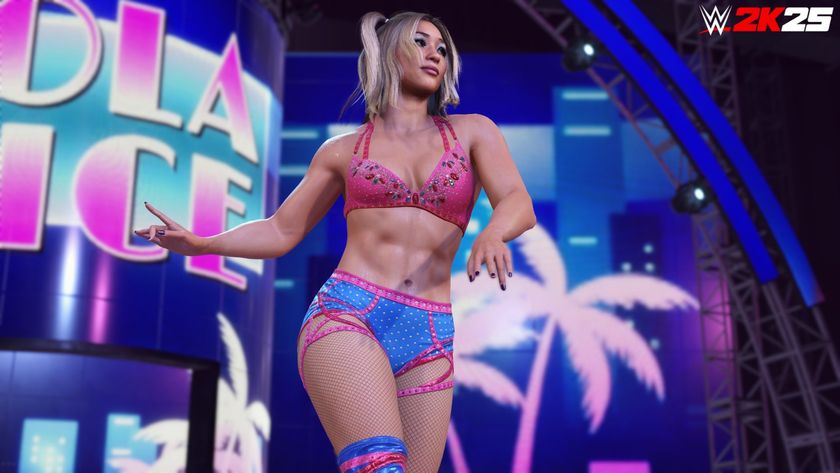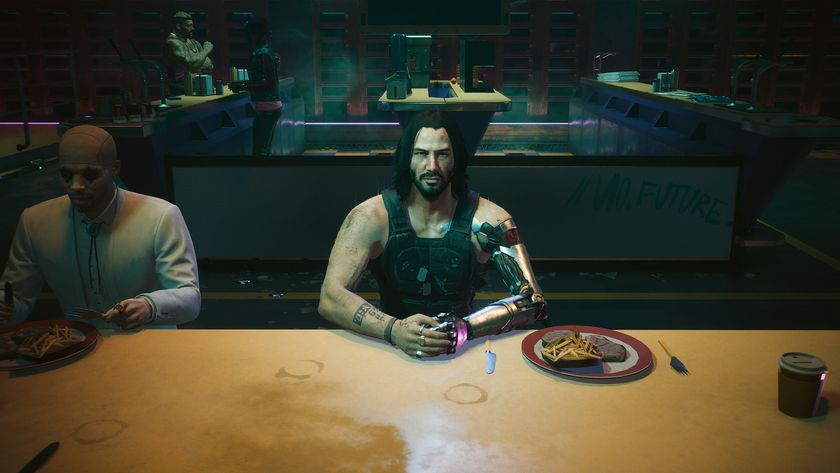"We're such perfectionists": Overwatch assistant director Aaron Keller on what makes Blizzard tick
Blizzard's assistant director on Warcraft, working lunches and Overwatch’s baby steps

As assistant game director at Blizzard Entertainment, Aaron Keller is one of the key developers behind Overwatch, the company's wildly successful team-based hero shooter. After 18 years spent working at the studio in Orange County, California, it's clear that his considerable experience helping create MMOs World Of Warcraft and (the now cancelled) Project Titan had a hand in making the Overwatch universe the sensation it is today. Now, with the announcement of Overwatch 2, he's at the forefront of fleshing out a world that has up until now merely served as a shiny backdrop to gun-based battles.
Indeed, it seems everything Blizzard touches turns to gold. Here, with Keller, we try to pin down the specifics of the design ethos strong enough to span multiple projects and genres, and that affords Blizzard's games their consistent hallmark of quality – and discover how Overwatch 2 will continue the World Of Warcraft maker's legacy.
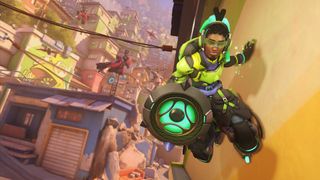

This feature first appeared in Edge Magazine. If you want more great long-form games journalism like this every month, delivered straight to your doorstop or your inbox, why not subscribe to Edge here.
How did you come to work for Blizzard?
Aaron Keller: I started in September of 2001, right after Blizzard had announced World Of Warcraft, on the World Of Warcraft team. Initially, I was slated to work on the dungeon team – we were considered 3D artists. So we had a group of about five guys, and we were just assigned to build all the dungeons and the cities in the game. So that was – gosh, that was like, three years before shipping the game, and we worked a tonne of hours. And we worked with all sorts of different departments on the team, from the exterior level designers to all the texture artists. We worked a lot with Bill Petras, who was the art director on World Of Warcraft, and he's now the art director on Overwatch and he was actually the person that hired me. I always kind of give him a hard time for the questions he asked me in the interview [laughs].
What did he ask you?
Keller: He's a huge Conan fan. He just loves Conan The Barbarian. So he asked me a couple of questions about whether I loved Conan. And I'm like, "Oh, yeah, it's great…" I don't think I did very well with those [laughs]. He asked me who my favourite artist was, we talked about architecture a little bit. And I guess I did well on those, because they hired me.
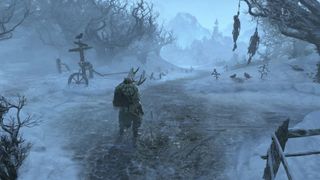
How were you taught how to make a Blizzard game? Does the company have any hard and fast rules when it comes to a design ethos?
Sign up to the 12DOVE Newsletter
Weekly digests, tales from the communities you love, and more
Keller: When I first started there wasn't really anything like that – maybe because I started as an artist and I worked my way into design, I didn't get to see it. But on World Of Warcraft, on all the games we make, first and foremost we're making a game that we want to play. And everyone is passionate about it. So when we started Overwatch, Jeff Kaplan, the game director, he had always wanted to make a shooter. He is in love with first-person shooters, played them throughout his whole life, even at a certain point picked up modding tools and was making maps and stuff for different shooters that were out there. And so it was just something that we always wanted to do, and we wanted to see a very particular take on it.
Over time, Blizzard started to kind of refine what some of our design principles were. And so we came up with key design values – Blizzard has a bunch of values for what Blizzard is, in general, as a company, you know, like 'gameplay first' and 'learn and grow'. There are all these things that are very important to us as a company, but we started codifying some of those on the design side too. Things like: 'control is king'. That was a huge one for us at the start of Overwatch – what does it feel like to just hit the buttons and control the character? And there's so much that goes into that, just the responsiveness and the character and the animations that they're playing. Even if you look at some of our other games, like Hearthstone... like, most people would probably say 'control is king' doesn't really apply to Hearthstone because it's just a card game. But even they took that to heart, in just the act of dragging a card out onto the board and what it feels like. You see what your hand does, you see what that card does, you see how it slams onto the ground. All that is part of making a game feel good.
On Project Titan, and actually even on Overwatch because we worked on that from the ground up, there was a lot of fundamental research work we needed to do. So you're looking at a lot of other games, and you're kind of trying to figure out what makes them tick a little bit. And I was doing a lot of work on levels, and so you end up making a tonne of research levels and research maps where you're saying, 'Okay, let's say a space is 12 metres wide – does that feel good to shoot characters in? Let's say it's 80 metres wide; does that feel good to shoot characters in? How high should characters be able to jump? How steep of a slope should they be able to run up?' And then you start working on – maybe I'm getting too into the weeds here – this entity called the character controller, the thing that the player is actually using their inputs to move around the world. I think we nailed the Overwatch character controller; there's lots of little tricks inside of it that I probably can't really talk about, about how it handles a lot of different situations and still make it feel really good.
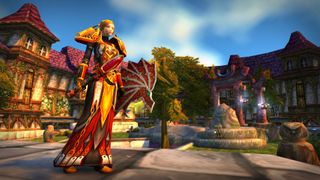
It must have been very different from working on World Of Warcraft, where things were already laid out for you. How much did you talk to the creators of other Blizzard games about making the bones of a Blizzard game?
Keller: One of the cool things about working at Blizzard is that people typically stay here for a long period of time – it's kind of like an end destination for people's careers. And so we have people on our team that have been at the company for almost 25 years, and they've moved around to a lot of different projects. They build all these relationships with other people on other teams, or they've worked on other teams. And so there's always a set of people that you can talk to about games. I've worked with a lot of different designers here, and a lot of the designers have worked with other designers, and so we do – we have conversations sometimes just over lunch, where we're talking about the different problems that we're working on. Other people that you have an incredible amount of respect for can weigh in on what they think they would do in that particular situation. And you might not always do what they say, but it's always kind of invaluable feedback that we're getting all around the company.
And it's not just to help Overwatch out, it's to help all the other projects out too. And you know what? It's not even to really help them. It's just because we're kind of obsessed with making games. We were talking about Star Wars Jedi: Fallen Order over the weekend: we just can't help but play games, and talk about the games that we're playing or we're working on, and see how we can make them better. I think that everyone kind of has this core belief that they're just trying to make the best piece of art that they can. Blizzard has always had this culture of not shipping a game until it's ready. We call ourselves an iterative design house – we work on something, and then we change the things that we think need to be changed, or we improve the things that we need to improve. And we just keep polishing and iterating on it until we think that it's great.

"Everyone on our team is a rock star of the game-development world: we hire the best people, the best developers in the industry."
So when is a game ready to ship at Blizzard? Do you have a sense of what the standard is before the company's ready to put it in a box, as it were?
Keller: It's torture, doing that [laughs]. It's torture shipping, and I think for most of the game team, the game is never ready. We're such perfectionists, we can always find the things that we want to change. And so it's really, really hard to say, 'This is the point where we think it's good enough'. Because we're our own worst critics at the company. Everyone on our team is a rock star of the game-development world: we hire the best people, the best developers in the industry. So we have a hard time shipping a product. I wish I could tell you what the magic formula is of us saying when it's ready, because it's painful every time to do it.
A lot of times, it's easiest for us get to a point where we think there's some magic in the game and you can start to feel it – like, 'This is good'. But at a certain point, you're educated enough to where you can pick an end date, and you just have to pick that end date no matter how difficult it is, and then every one of the team is able to focus towards that point. And typically it means for some people, you're pouring your heart and soul into a certain set of features because in eight months, this thing's going out the door and we're going to put Blizzard on the box. In the credits it's going to say, 'Designed by Blizzard'. It has to be good enough
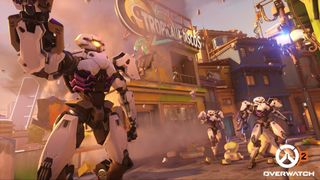
When did you know Overwatch 2 was going to be a full-fledged sequel?
Keller: Early on in the Overwatch development cycle, like, in the first few months, we had a pretty solid idea of what the current Overwatch game was going to be. And just because we had come off of Project Titan – which was this massive game, it was bigger than any game I'd ever worked on or even heard of, there were just so many features in it – we had this philosophy that we wanted to start very, very focused with Overwatch. And we called the philosophy 'crawl, walk, run,' and Overwatch was going to be our 'crawl'. And then we had another game that we were referring to as our 'walk', and that's kind of what Overwatch 2 has developed into. It's a game that is more than just players competing against each other. It's a much bigger game with a story with a tonne of content behind it, where players are kind of going through missions with each other against AI. And so we'd always thought of it as a big game. But after Overwatch shipped, with the success of it... it's not like it was ever really a separate game, Overwatch 2, but we quickly realised that it was going to fulfil everything that Overwatch could be.
Overwatch is, at its heart, a fast-paced, team-based shooter; we have now over 50 million people who have played this game. I think one of the amazing things about Overwatch, though, is we have a lot of fans that don't even play the game. There are a lot of people out there that say, 'I love Tracer, I love Mercy – but I just can't play such a competitive FPS game. But I love Overwatch and I love the universe – can you make something for me to play?' And I think Overwatch 2 is going to fulfil that for them, where there's this game that people that don't play competitive shooters can jump into and play it the way that Blizzard designs games – they're going to be able to play the co-op side of Overwatch 2 as their main lifestyle game.
There is so much to that side of the game, from this big story experience that we want to take people through as we see what Overwatch as an organisation is going to turn into and how they react to this massive global threat across the world, to this really deep progression system as they as they play through the Hero Missions. Our closest analogy to that right now is what Adventure Mode is to Diablo 3, that's what these Hero Missions are to us. So it's this massive tail to the game where people can play this for years if they want to. And for us, as we started talking about the game in those terms, it couldn't really be anything but a sequel.
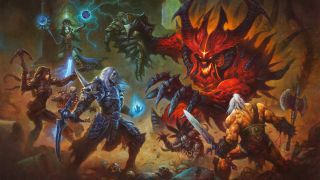
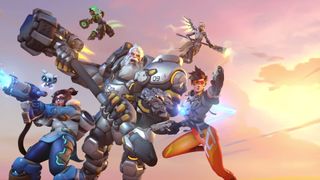
Overwatch 2 hands-on: Blizzard's sequel is no game-changer, but maybe that's for the best
How much have you consulted with the Diablo 3 team on those kinds of mechanics?
Keller: We talk to them all the time, we go to lunch. I'm good friends with a lot of people on the Diablo 4 team, and a lot of them were on the Diablo 3 team. Another analogy we make is our Hero Missions are similar to world quests in World Of Warcraft – one of the lead designers of that system, and one of the lead designers on World Of Warcraft, is now on our team spearheading our progression system. So yeah, we have experience from all across the company: we have designers from the Diablo team now working on our team, and then we have friends and colleagues that we're in constant communication with, kind of sharing our ideas with and getting feedback from them.
What's the biggest thing that you've been able to take from your work on other genres at Blizzard and apply to Overwatch?
Keller: We had this philosophy on World Of Warcraft, that the world was the main character. And if you think about that game, especially the original one when it came out, there wasn't really any main protagonist, a good guy or a bad guy. It was all about exploring this world. That really resonated with me, and has stuck with me. Working on Overwatch, we started creating this really amazing world. And the thing that stuck out the most in the Overwatch universe was the heroes. The heroes are things that everybody I think can relate to; there are so many different personalities, all a little larger than life, that I think that people can look at those and really be inspired. But it's hard for us to really explore the world in that type of game – it's so fast-paced that it's difficult to deliver story. We're able to take people to maps all across the world. They're all visually stunning and interesting, but it's hard to go beyond that.
So that's one of the things I'm most excited about with Overwatch 2, is we can finally start exploring this world. It's such an important thing for us at Blizzard to create these worlds and let players walk around and explore them. And now we finally get to do that. On Overwatch 2, we get to take people through a big story; we get to introduce them to different characters; you get to see what these different characters' relationships with each other are, what their relationships to Overwatch and to some of the main protagonists in the story are. I'm really excited to be able to start doing that for our players.

World of Warcraft turns 15: Looking back on the MMO's journey to WoW Classic with technical director Patrick Dawson.
Jen Simpkins is the former Editor of Edge magazine, and is a multi-award-winning creative writer. In her most recent industry role, Jen lent her immense talents to Media Molecule, serving as editorial manager and helping to hype up the indie devs using Dreams as a platform to create magical new experiences.
Most Popular







